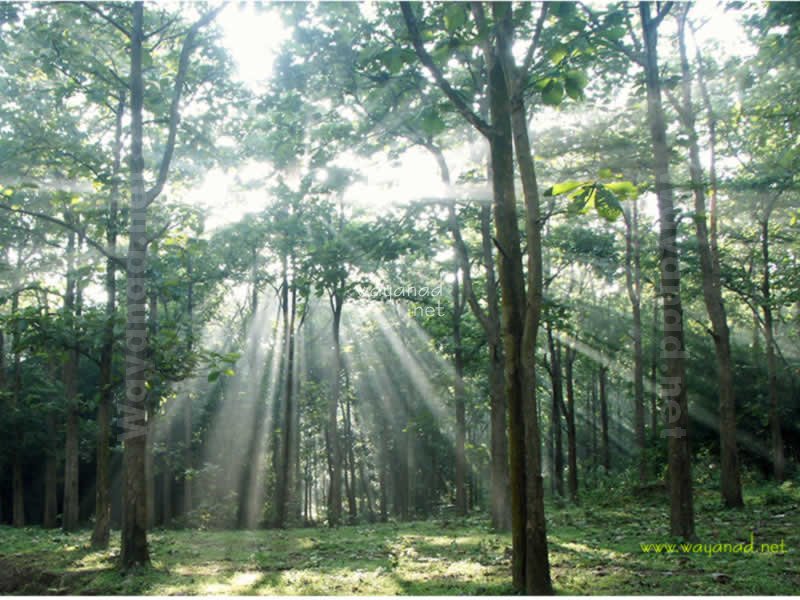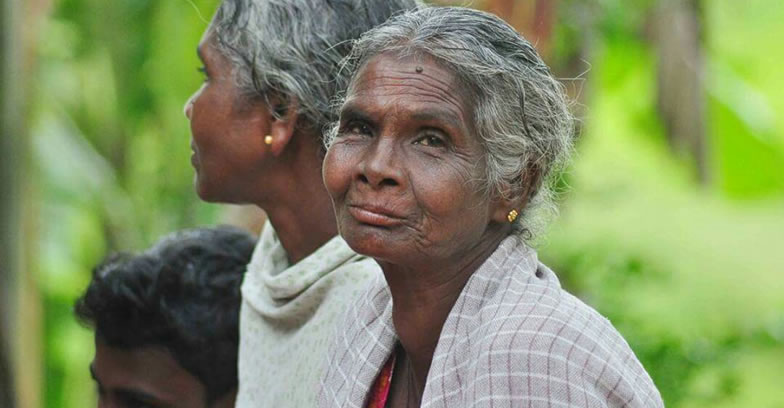Wayanad flora and fauna
Established in the year 1973, the Wayanad Wild Life Sanctuary is about 344 sq km in extent. The Sanctuary exists as two bits. Tholpetty, near Mananthavady is contiguous with Nagarhole of Karnataka. The Muthanga – Bathery – Kurichiat Ranges are nearer to Sulthan bathery and border Mudumalai of Tamil Nadu and Bandipur of Karnataka . Rich in biodiversity, the sanctuary is an integral part of the Nilgiri Biosphere Reserve, which has been established with the specific objective of conserving the biological and cultural heritage of the region. Interestingly it was from here that Pazhassi Raja fought valiantly against the British. Consisting entirely of notified Reserves, the Sanctuary is very rich in flora and fauna. The management of the Sanctuary lays emphasis on scientific conservation with due consideration to the general lifestyle of the tribals and others who live on the fringes of the forest. The tract is gently undulating with occasional hillocks. The highest peak is Karottimala (1158m). An average annual rainfall of 2000 mm is received. Temperature varies from 13° c to 32°c.
Forest types
The Sanctuary has the typical moist and dry deciduous forest types which covers most of the area. However there are a few patches of semi ever green forests. The moist deciduous forests are intervened with natural growth of bamboo thickets. About 30% of the Sanctuary is under plantations of teak, eucalyptus and silver oak. However the recent management of the Sanctuary aims conservation in total encouraging natural regeneration in plantations. The marshy lands, locally called “vayals” in the midst of deciduous forests are the ideal places for wild life viewing.
Flora
The dry and moist deciduous elements dominate the flora of Wayanad. Careya arborea (Pezhu), Dalbergia latifolia (Rosewood), Termination chebula (Kadukka), Kydia calycina (Vellachadachi), Anogeissus latifolia (Axle wood), Stereospermum colias (Padiri) etc. are the dominant tree species. Shrubs such as Helicters isora, Randia ulginosa and herbs like Ageratum conizioides, Rauvolfia, serpentine , sida cordifolia, etc are also present. The dedicious forests of Wayanad is famous for woody climbers like Entada scandens, Calycopteries floribunda etc. Bambusa bambos, Dendrocalamus strictus and Ochlandra rheedii are also frequent.
Fauna
As a part of contiguous stretch of forests, Wayanad has representatives of all peninsular Indian Mammals. The seasonal movements of elephants with the advent of summer increase the density of this mega herbivore in the sanctuary . The guar sambar chitral barking deer wild boars etc are commonly sighted. The tiger, leopard, wild dogs and sloth bear are the carnivores. The lesser cats such as jungle cat and leopard cat are the also occasionally seen. Common langur and bonnet macaques are the commonest monkeys of the sanctuary . The rarest slender loris is also reported. The avifauna is rich with 123 species including great black woodpecker, golden backed three- toed wood pecker, Malabar whistling thrush , Malabar trogon shama, painted bush quail, golden oriole, peacock, paradise flycatcher, Malabar grey hornbill, pariah kite, crested honey buzzard, crested serpent eagle etc. The deciduous habitat is the ideal home of a varied reptile fauna. Crocodile, golden tree snake, coral snake green whip snake, pit vipers, termite hall gecko, chameleon, flying lizard, monitor lizard, skinks, and flap shell turtles are a few to mention Thirty species of amphibians are recorded from the sanctuary. Ornate microhylid, red microhylid, Ceylon kaliula, triangle-spotted Ramnella, bi-coloured frog, bronze frog and Malabar gliding frog are the commonest amphibians. The tributaries of Kabani draining the area have a variety of fishes including the rare and endemic ones. The Wayanad barb (Puntius wynaadensis), korhi barb (P. micropogon), Wayanad mystus (Mystus montanus), snake heads (Channasp.), Malabar catopra (Pristoleptis marginata), ariza labeo (Labeo ariza), common rasbora (Rasbora daniconius), giantdanio (Danio aequipinnatus) etc. are commonly seen.
Accommodation is available in Sultan Bathery and Mananthavady, the nearest towns. The sramby (the wooden rest houses) and dormitories are available with in the Sanctuary. The sanctuary is connected by the road with Kozhikode (96 km) Mysore (95 km) and Ooty (160 Km) The nearest airport and railhead is Kozhikode.




